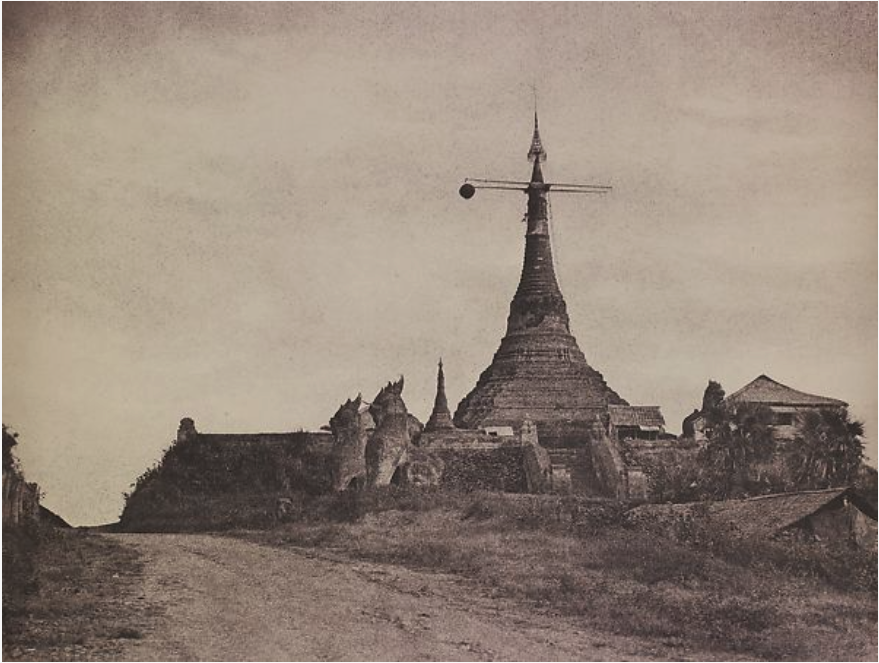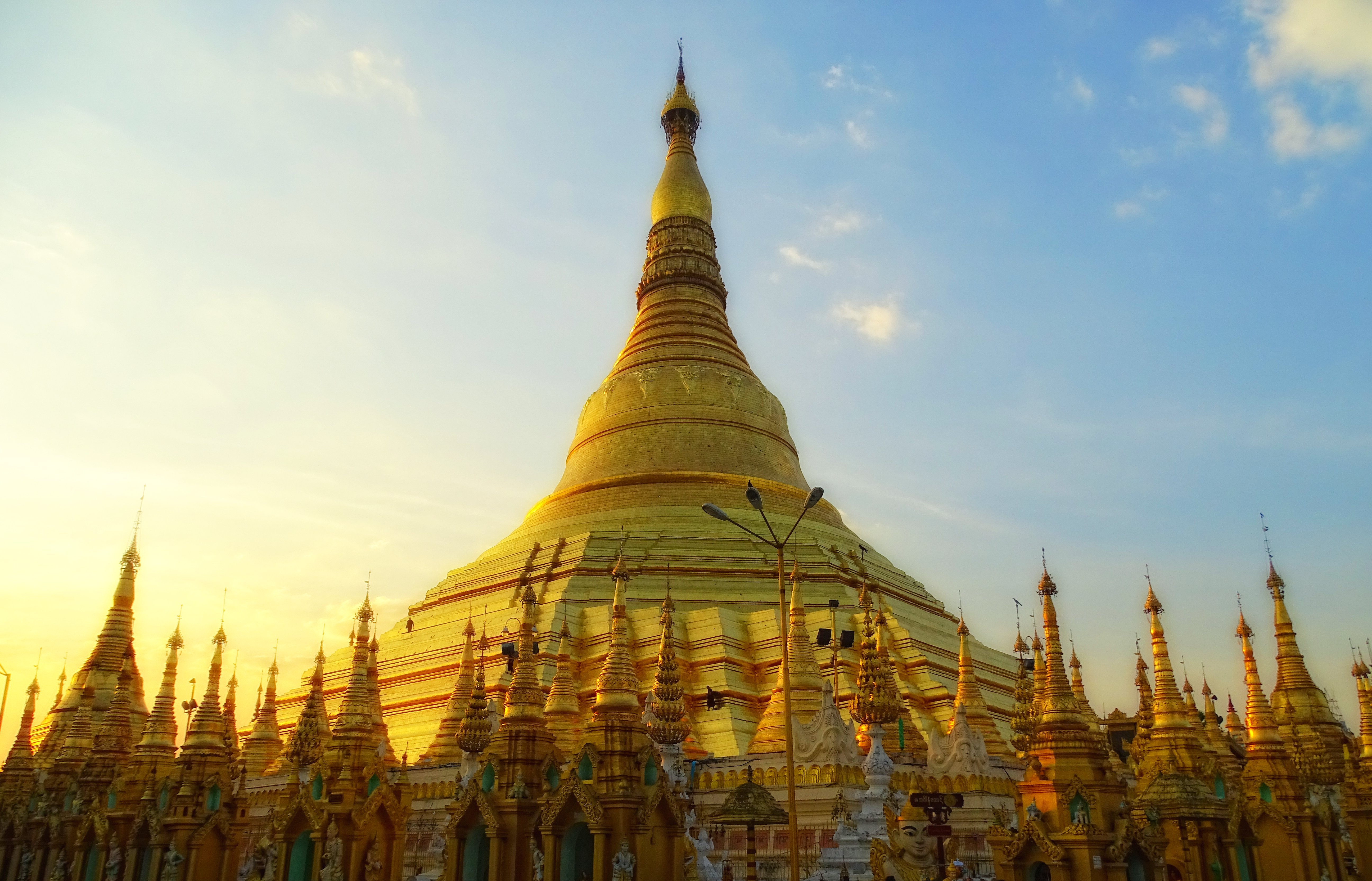|
Daw Ohn
Ohn (, ; 6 July 1913 – 28 November 2003), known honorifically as M.A. Daw Ohn (), was a 20th-century Burmese activist, scholar and professor who specialized in the Pali language and the oriental studies and served as the head of the Department of Buddhistic Studies at the University of Mandalay from 1958 to 1966. She is regarded as the mother of the Department of Oriental Studies of Mandalay University. Ohn was one of the founders of independent Mandalay University where she served as the Dean of the Faculty of Arts. She received Naingngan Gonyi (Second Class) order given by the government in 1980. Early life and education Ma Ohn, the seventh of eight siblings, was born on 6 July 1913 in Kinsanamahi Quarter, Chanayethazan Township, Mandalay to U Kyaw Ya and Daw Daw Khin. She was educated at the Mandalay Central National High School after completing elementary at the National Women's School where she started her education in 1925. She passed the matriculation examinatio ... [...More Info...] [...Related Items...] OR: [Wikipedia] [Google] [Baidu] |
Burmese Names
Burmese names () lack the serial structure of most Western names. Like other Mainland Southeast Asian people (except Vietnamese), the people of Myanmar have no customary matronymic or patronymic naming system and no tradition of surnames. Although other Mainland Southeast Asian countries such as Thailand, Laos, Cambodia, Malaysia introduced the use of surnames in early 20th century, Myanmar never introduced the use of surnames and lacks surnames in the modern day. In the culture of Myanmar, people can change their name at will, often with no government oversight, to reflect a change in the course of their lives. Also, many Myanmar names use an honorific, given at some point in life, as an integral part of the name. Traditional and Western-style names Burmese names were originally one syllable, as in the cases of U Nu and U Thant ("U" being an honorific). In the mid-20th century, many Burmese started using two syllables, albeit without any formal structure. In the late 1890s ... [...More Info...] [...Related Items...] OR: [Wikipedia] [Google] [Baidu] |
Academic Staff Of Mandalay University
An academy (Attic Greek: Ἀκαδήμεια; Koine Greek Ἀκαδημία) is an institution of tertiary education. The name traces back to Plato's school of philosophy, founded approximately 386 BC at Akademia, a sanctuary of Athena, the goddess of wisdom and skill, north of Athens, Greece. The Royal Spanish Academy defines academy as scientific, literary or artistic society established with public authority and as a teaching establishment, public or private, of a professional, artistic, technical or simply practical nature. Etymology The word comes from the ''Academy'' in ancient Greece, which derives from the Athenian hero, ''Akademos''. Outside the city walls of Athens, the gymnasium was made famous by Plato as a center of learning. The sacred space, dedicated to the goddess of wisdom, Athena, had formerly been an olive grove, hence the expression "the groves of Academe". In these gardens, the philosopher Plato conversed with followers. Plato developed his sessions ... [...More Info...] [...Related Items...] OR: [Wikipedia] [Google] [Baidu] |
2003 Deaths
This is a list of lists of deaths of notable people, organized by year. New deaths articles are added to their respective month (e.g., Deaths in ) and then linked below. 2025 2024 2023 2022 2021 2020 2019 2018 2017 2016 2015 2014 2013 2012 2011 2010 2009 2008 2007 2006 2005 2004 2003 2002 2001 2000 1999 1998 1997 1996 1995 1994 1993 1992 1991 1990 1989 1988 1987 1986 Earlier years ''Deaths in years earlier than this can usually be found in the main articles of the years.'' See also * Lists of deaths by day * Deaths by year (category) {{DEFAULTSORT:deaths by year ... [...More Info...] [...Related Items...] OR: [Wikipedia] [Google] [Baidu] |
1913 Births
Events January * January – Joseph Stalin travels to Vienna to research his ''Marxism and the National Question''. This means that, during this month, Stalin, Hitler, Trotsky and Tito are all living in the city. * January 3 – First Balkan War: Greece completes its Battle of Chios (1912), capture of the eastern Aegean island of Chios, as the last Ottoman forces on the island surrender. * January 13 – Edward Carson founds the (first) Ulster Volunteers, Ulster Volunteer Force, by unifying several existing Ulster loyalism, loyalist militias to resist home rule for Ireland. * January 18 – First Balkan War: Battle of Lemnos (1913), Battle of Lemnos – Greek admiral Pavlos Kountouriotis forces the Turkish fleet to retreat to its base within the Dardanelles, from which it will not venture for the rest of the war. * January 23 – 1913 Ottoman coup d'état: Enver Pasha comes to power. February * February 1 – New York City's Grand Central Te ... [...More Info...] [...Related Items...] OR: [Wikipedia] [Google] [Baidu] |
Pali Text Society
The Pāli Text Society is a text publication society founded in 1881 by Thomas William Rhys Davids "to foster and promote the study of Pāli texts." Pāli is the language in which the texts of the Theravada school of Buddhism are preserved. The Pāli texts are the oldest collection of Buddhist scriptures preserved in the language in which they were written down. The society first compiled, edited, and published Latin script versions of a large corpus of Pāli literature, including the Pāli Canon, as well as commentarial, exegetical texts, and histories. It publishes translations of many Pāli texts. It also publishes ancillary works including dictionaries, concordances, books for students of Pāli and the ''Journal of the Pali Text Society''. History 19th century beginnings Thomas William Rhys Davids was one of three British civil servants who were posted to Sri Lanka, in the 19th century, the others being George Turnour, and Robert Caesar Childers (1838–1876). At t ... [...More Info...] [...Related Items...] OR: [Wikipedia] [Google] [Baidu] |
Myanmar Standard Time
Myanmar Standard Time (, ), formerly Burma Standard Time (BST), is the standard time in Myanmar, 6.5 hours ahead of UTC. Myanmar Standard Time (MMT) is calculated on the basis of 97°30′E longitude.MFF 2002: 1 MMT is used all year round, as Myanmar does not observe daylight saving time.USNAO 2013: 262 History Pre-colonial period Myanmar did not have a standard time before the British colonial period. Each region kept its own local mean time, according to the Burmese calendar rules: sunrise, noon, sunset and midnight.(Clancy 1906: 57): The Burmese calendar recognizes two types of day: astronomical and civil. The mean Burmese astronomical day is from midnight to midnight, and represents 1/30th of a synodic month or 23 hours, 37 minutes and 28.08 seconds. The civil day comprises two halves, the first half beginning at sunrise and the second half at sunset. The day was divided into eight 3-hour segments called ''baho'' (ဗဟို), or sixty 24-minute segments called ''nayi'' ... [...More Info...] [...Related Items...] OR: [Wikipedia] [Google] [Baidu] |
United Nations Economic And Social Council
The United Nations Economic and Social Council (ECOSOC) is one of six principal organs of the United Nations, responsible for coordinating the economic and social fields of the organization, specifically in regards to the fifteen specialized agencies, the eight functional commissions, and the five regional commissions under its jurisdiction. ECOSOC serves as the central forum for discussing international economic and social issues, and formulating policy recommendations addressed to member states and the United Nations System. It has 54 members. In addition to a rotating membership of 54 UN member states, over 1,600 nongovernmental organizations have consultative status with the Council to participate in the work of the United Nations. ECOSOC holds one four-week session each year in July, and since 1998 has also held an annual meeting in April with finance ministers of heading key committees of the World Bank and the International Monetary Fund (IMF). Additionally, the High ... [...More Info...] [...Related Items...] OR: [Wikipedia] [Google] [Baidu] |
United Nations Commission On The Status Of Women
The Commission on the Status of Women (CSW or UNCSW) is a functional commission of the United Nations Economic and Social Council (ECOSOC), one of the principal organs of the United Nations. CSW has been described as the UN organ promoting gender equality and the empowerment of women. Every year, representatives of member states gather at United Nations Headquarters in New York to evaluate progress on gender equality, identify challenges, set global standards and formulate concrete policies to promote gender equality and advancement of women worldwide. In April 2017, ECOSOC elected 13 new members to CSW for a four-year term 2018–2022. One of the new members is Saudi Arabia, which has been criticised for its treatment of women. UN agencies actively followed their mandates to bring women into development approaches and programs and conferences. Women participate at the prepcoms, design strategy, hold caucus meetings, network about the various agenda items being negotiated in ... [...More Info...] [...Related Items...] OR: [Wikipedia] [Google] [Baidu] |
Ministry Of Religious Affairs And Culture (Myanmar)
The Ministry of Religious Affairs and Culture () administers the religious affairs, cultural affairs and historical and archaeology research efforts of Myanmar (formerly Burma). The Department of Religious Affairs purification, perpetuation, promotion and propagation of the Theravada Buddhist Sasana and promotes Myanmar traditional customs and culture. History The Ministry of Culture was established on 16 March 1952 as the Ministry of Union Cultures, and later renamed the Ministry of Culture on 15 March 1972. The Ministry of Religious Affairs (MORA) came into being before the Union of Burma (now known as the Republic of the Union of Myanmar) regained its independence in 1947. On 2 March 1962, the Union Revolutionary Council government reorganised all ministries. MORA became a department of the Ministry of Home and Religious Affairs. On 18 September 1988. the State Law and Order Restoration Council formed the department for the Promotion and Propagation of the Sasana, also und ... [...More Info...] [...Related Items...] OR: [Wikipedia] [Google] [Baidu] |
The Irrawaddy
''The Irrawaddy'' () is a news website by the Irrawaddy Publishing Group (IPG), founded in 1990 by Burmese exiles living in Thailand. As a publication produced by former Burmese activists who fled violent crackdowns on anti-military protests in 1988, it has always been closely associated with the pro-democracy movement, although it remains unaffiliated with any of the political groups that have emerged since the 8888 Uprising. ''The Irrawaddy'' is published in both English and Burmese, with a primary focus on Burma and Southeast Asia. It is regarded as one of the foremost journalistic publications dealing with political, social, economic and cultural developments in Burma. In addition to news, it features in-depth political analysis and interviews with a wide range of Burma experts, business leaders, democracy activists and other influential figures. History It was started in 1990 with the name ''Burma Issues''. The founder is Aung Zaw, a student activist from Rangoon Univ ... [...More Info...] [...Related Items...] OR: [Wikipedia] [Google] [Baidu] |
Shwedagon Pagoda
The Shwedagon Pagoda (, ; ), officially named ''Shwedagon Zedi Daw'' (, , ), and also known as the Great Dagon Pagoda and the Golden Pagoda, is a gilded stupa located in Yangon, Myanmar. The Shwedagon is the most sacred Buddhist pagoda in Myanmar, as it is believed to contain relics of the four previous Buddhas of the present kalpa. These relics include the staff of Kakusandha, the water filter of Koṇāgamana, a piece of the robe of Kassapa, and eight strands of hair from the head of Gautama. Built on the Singuttara Hill, the tall pagoda stood above sea level,The pagoda's pinnacle height (to the tip of its ''hti'') is tall per (UNESCO 2018), and is built on the Singuttara Hill, which is tall per , and tall above sea level per and dominates the Yangon skyline. Yangon's zoning regulations, which cap the maximum height of buildings to above sea level (75% of the pagoda's sea level height), ensure the Shwedagon's prominence in the city's skyline. History Legend ... [...More Info...] [...Related Items...] OR: [Wikipedia] [Google] [Baidu] |



